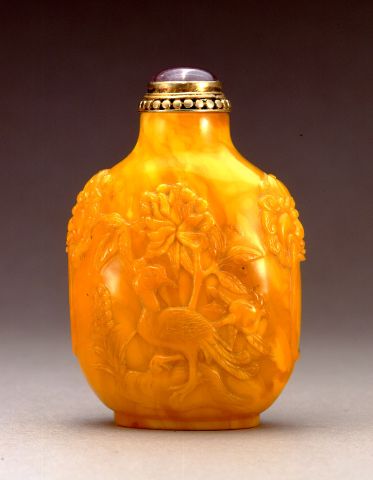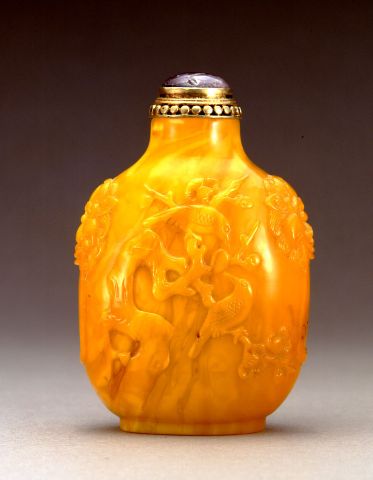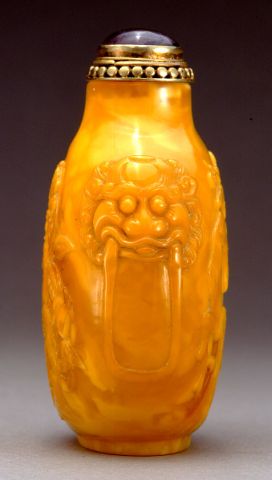


Bottle ID: 312
CARVED PEONIES AND MAGPIES
Date: 1770-1880
Height: 65 mm
Amber, of opaque and translucent yellow, of flattened ovoid form with rounded shoulders sloping to a cylindrical neck and with a recessed oval foot; carved in low relief on one side with a pheasant on an ornamental rock with peonies and cockscomb growing nearby and on the reverse with two magpies perched in the branches of a flowering prunus tree, the sides carved with mock mask and ring handles.
Similar Examples:
Stevens, Bob C. The Collector's Book of Snuff Bottles, 1976, pp. 178-179, no. 701.
Moss, Hugh, Victor Graham and Ka Bo Tsang. The Art of the Chinese Snuff Bottle - The J & J Collection, 1993, Vol. II, p. 501, no. 296.
Sotheby's, New York, March 17, 1997, lot 128, The D.W. Mason Collection.
Provenance:
Hugh Moss (HK) Ltd.
Alex S. Cussons
Sydney L. Moss Ltd.
Published:
Moss, Hugh M. (ed.) Chinese Snuff Bottles: 1, p. 19
Most opaque amber bottles are of a distinctly orange or brown color, and as such this example stands out for its vibrant golden yellow yellow tones and variegated markings. It has a convivial symbolism as the magpies with prunus represent marital harmony forever, whilst the pheasant symbolizes food on the table or simply a good dinner for all. In the 19th century writings of Zhao Zhiqian in the Yonglu Xianjie, it states: "In the old days amber that was red in color was most prized, but nowadays people most esteem the pale yellow kind that is called golden amber (jinbo). "
< Back to full list

 English
English 中文
中文